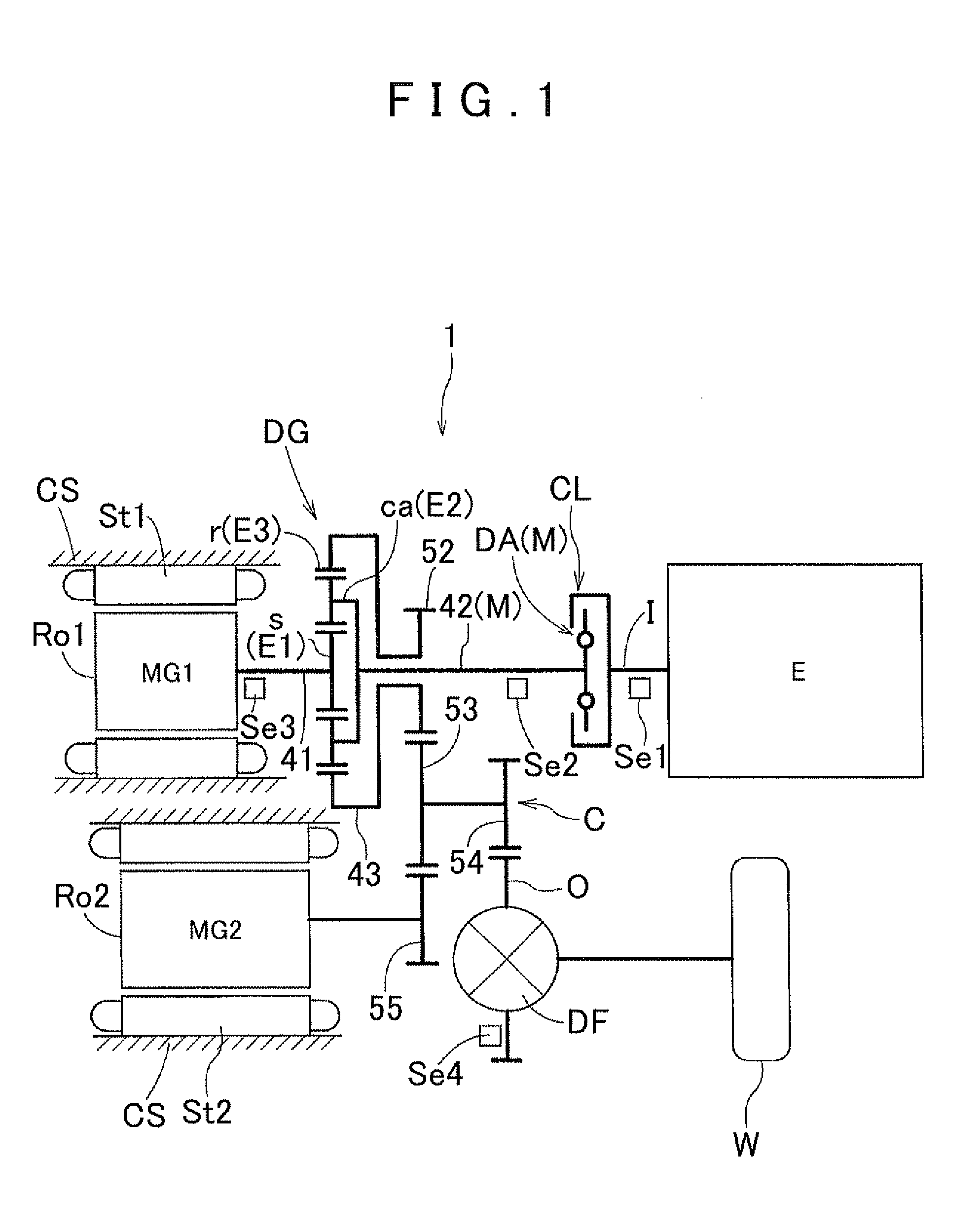Vehicle drive device
a technology of drive device and friction engagement device, which is applied in the direction of dynamo-electric gear control, machines/engines, transportation and packaging, etc., can solve the problems of eccentricity of the rotary members on both sides of the friction engagement device, and the load acting on the bearings that support the rotary members can become larger, so as to reduce the torque transfer to the output member via the third rotary element of the differential gear device, the effect of reducing the engagement pressure of the friction engagemen
- Summary
- Abstract
- Description
- Claims
- Application Information
AI Technical Summary
Benefits of technology
Problems solved by technology
Method used
Image
Examples
first embodiment
1. First Embodiment
[0037]A vehicle drive device according to a first embodiment of the present invention will be described with reference to the drawings. As shown in FIG. 1, a vehicle drive device 1 according to the embodiment is a drive device (hybrid vehicle drive device) that drives a vehicle (hybrid vehicle) including an internal combustion engine E and rotary electric machines MG1 and MG2 each serving as a drive force source for wheels W. The vehicle drive device 1 according to the embodiment also includes a control device 70 (see FIG. 3). The control device 70 controls operation of the drive force sources and so forth on the basis of the system configuration shown in FIG. 3. In FIG. 3, broken lines each indicate a transfer path for electric power, and solid arrows each indicate a transfer path for various types of information.
[0038]In the embodiment, as shown in FIG. 1, a differential gear device DG provided in the vehicle drive device 1 is formed by a planetary gear mechanis...
second embodiment
2. Second Embodiment
[0122]A vehicle drive device according to a second embodiment of the present invention will be described with reference to the drawings. The vehicle drive device 1 according to the embodiment is different from the first embodiment described above mainly in the method to determine completion of the axis adjustment performed by the alignment control section 77 and the associated configuration. The differences between the configuration of the vehicle drive device 1 according to the embodiment and that according to the first embodiment described above will be mainly described below. The same elements as those in the first embodiment described above will not be specifically described.
[0123]The alignment control section 77 determines completion of the axis adjustment at least on the basis of the rotational speed difference ΔN between the input member I and the intermediate member M as in the first embodiment described above. In the embodiment, further, the alignment co...
PUM
 Login to View More
Login to View More Abstract
Description
Claims
Application Information
 Login to View More
Login to View More - R&D
- Intellectual Property
- Life Sciences
- Materials
- Tech Scout
- Unparalleled Data Quality
- Higher Quality Content
- 60% Fewer Hallucinations
Browse by: Latest US Patents, China's latest patents, Technical Efficacy Thesaurus, Application Domain, Technology Topic, Popular Technical Reports.
© 2025 PatSnap. All rights reserved.Legal|Privacy policy|Modern Slavery Act Transparency Statement|Sitemap|About US| Contact US: help@patsnap.com



